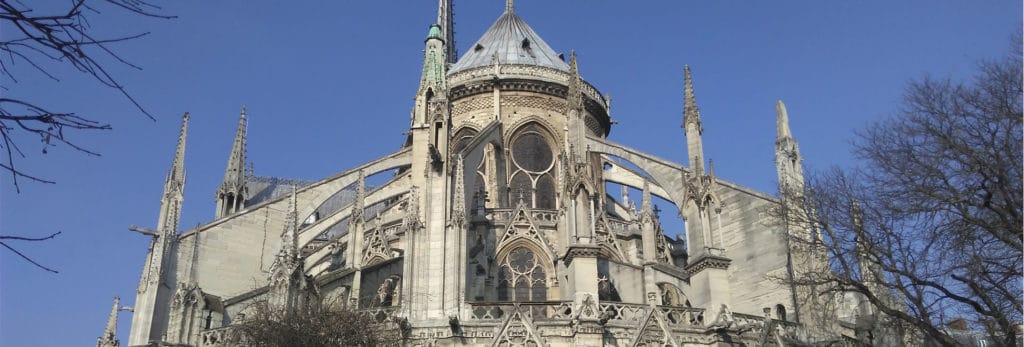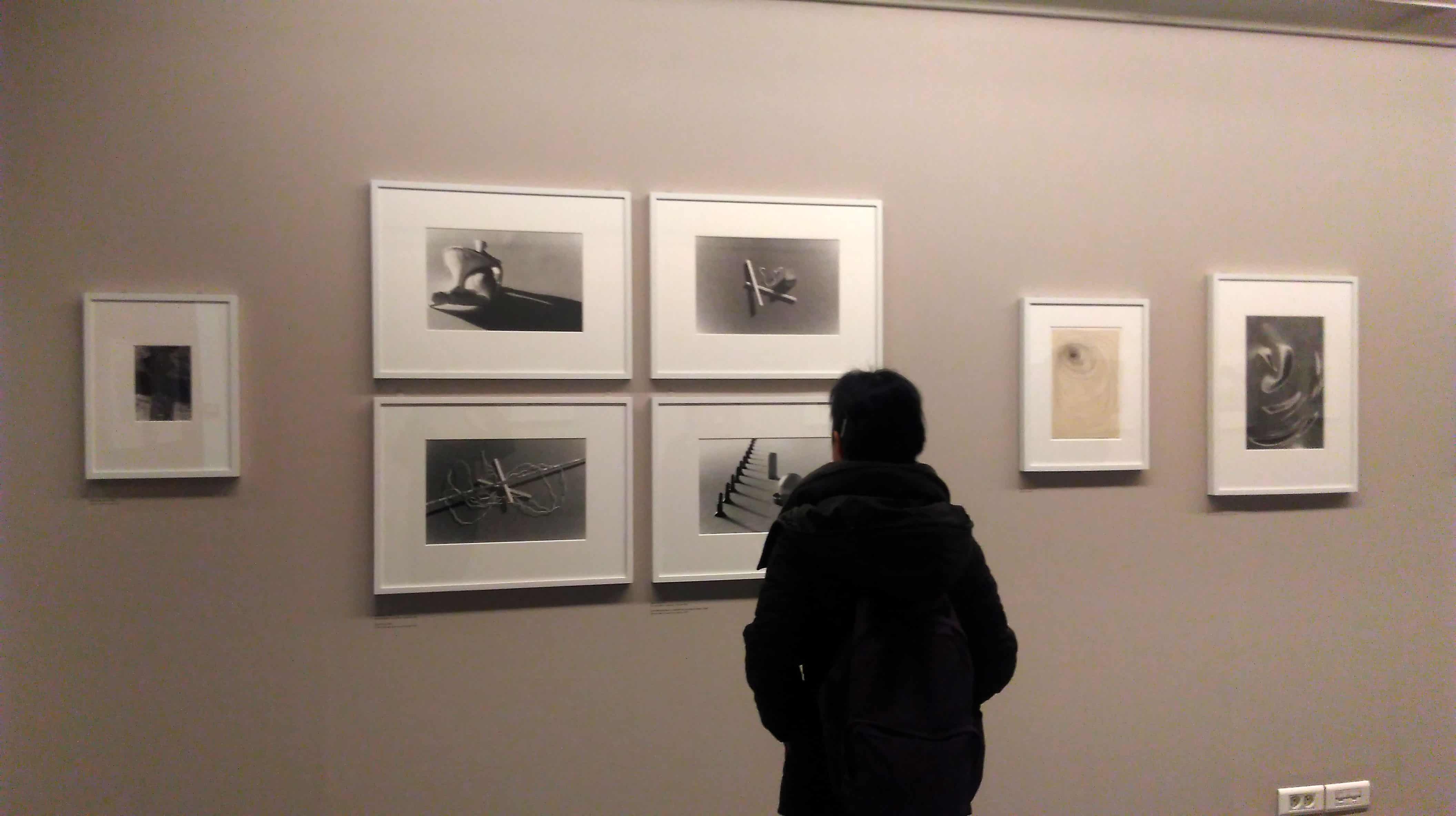One of our contributors decided to spend her last week of February 2018 in Paris.
Walking around this beautiful, vibrant city is an utterly enjoyable experience as there is always something fabulous waiting for you round the corner. And if you happen to be short of time or get tired during the art stroll, please check our subjective guide.
A. Zbigniew Dłubak (solo show)
Fondation Henri Cartier-Bresson
The Zbigniew Dłubak – Héritier des avant-gardes exhibition is being held at the Fondation Henri Cartier-Bresson between January 17 and April 29, 2018.
In the post-war period, Zbigniew Dłubak (1921-2005) was one of the driving forces behind the profound changes in the Polish artistic scene. A great experimenter of photographic forms, he was also a painter, art theoretician, teacher and editor of the Fotografia magazine for twenty years, introducing into this publication a robust photographic critique and interdisciplinary approach to the medium. He enjoyed a certain notoriety in Poland during his lifetime. Several monographic exhibitions were dedicated to him and some of his major works are part of Polish public collections.
Although Dłubak was primarily known as a photographer, he initially aspired to become a painter, tirelessly searching for materials for drawing during the war. Very active in these two traditionally separate disciplines, he greatly influenced the decompartmentalisation of artistic forms. He also defended the right of photography to exist as a completely separate discipline.
Curated by Karolina Ziebinska-Lewandowska, a specialist in Dłubak’s work, the exhibition is accompanied by a book published by Éditions Xavier Barral under the direction of Karolina Ziebinska-Lewandowska, which includes a wide selection of images, an essay by Éric de Chassey and an introduction as well as seven texts by the curator. The exhibition is being organised in collaboration with the Fundacja Archaeologia Fotografii in Warsaw, where the artist’s archives are kept.
The exhibition benefits from the support of the Polish Institute in Paris and the Adam Mickiewicz Institute operating under the Culture.pl brand within the international cultural programme POLSKA 100 accompanying Poland’s centenary of regaining independence. Financed by the Ministry of Culture and National Heritage of the Republic of Poland as part of the Multi-annual Programme
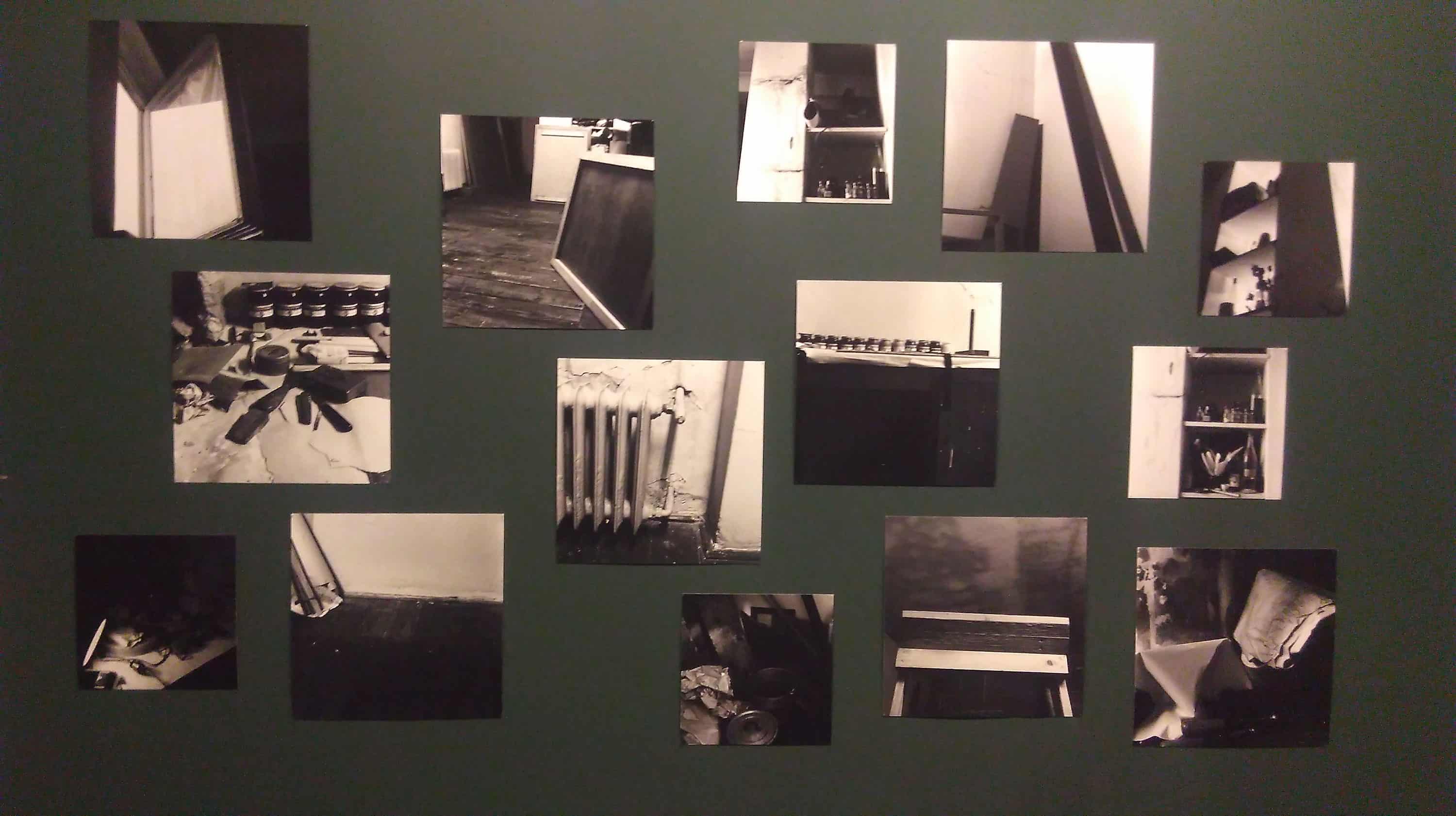
B. Edward Krasiński (group show)
Fondation Louis Vuitton
The Museum of Modern Art (MoMA) and Fondation Louis Vuitton announce the first exhibition in France to present MoMA’s unparalleled collection. “Being Modern: MoMA in Paris” will be on view at Fondation Louis Vuitton from October 11, 2017, through March 5, 2018.
“Being Modern: MoMA in Paris” features masterworks by artists including Max Beckmann, Alexander Calder, Paul Cézanne, Marcel Duchamp, Walker Evans, Jasper Johns, Ernst Ludwig Kirchner, Gustav Klimt, Yayoi Kusama, René Magritte, Pablo Picasso, Ludwig Mies van der Rohe, Yvonne Rainer, Frank Stella, and Paul Signac. Edward Krasiński is among the artists. A selection of rarely shown documentary material from MoMA’s Archives will be incorporated in the galleries, tracing the history of the Museum and contextualizing the works.
Established in 1929, The Museum of Modern Art was one of the first museums devoted exclusively to the visual arts of the time. Exhibition “Being Modern: MoMA in Paris” represents the wide range of artworks that MoMA has acquired over the decades, ranging from the early defining movements of the modern art period to Abstract Expressionism, Minimalism, Pop art and digital works of art.
The exhibition opens with MoMA’s first decade, including such iconic works as Edward Hopper’s House by the Railroad (acquired in 1930), Paul Cézanne’s The Bather (acquired in 1934) Constantin Brancusi’s Bird in Space (acquired in 1934), as well as Walker Evans’s Posed Portraits, New York (acquired in 1938), Walt Disney’s Steamboat Willie (acquired in 1936), and utilitarian, machine-made objects, such as an outboard propeller, a flush valve, and a self-aligning ball bearing (acquired in 1934). It continues to the post-war period including works from Jackson Pollock (Echo: Number 25) and Willem de Kooning (Woman I).
The next section is dedicated to Minimalism and Pop art. Emerging as two major new art forms in the 1960s, these movements are seen through a dialogue between painting, architecture, sculpture, and photography. The exhibition then turns to other works from 1960 onwards, including pieces from movements such as Fluxus and the socalled Pictures Generation, as well as an introspective look at the history of America through work by artists such as Romare Bearden, Jeff Wall, and Cady Noland.
The final section, located on the top floor of the building, focuses on contemporary works from around the world, most of which were acquired by MoMA in the last two years. These include Kerry James Marshall’s large painting Untitled (Club Scene) (acquired in 2015), Lele Saveri’s The Newsstand (community-oriented installation, originally presented at a subway stop in Brooklyn, New York; acquired in 2016), and the original set of 176 emoji designed by Shigetaka Kurita (acquired in 2016).
Works being shown in France for the first time include Brancusi’s Bird in Space, Diane Arbus’s Identical Twins, Roselle, New Jersey (1967), Andy Warhol’s Campbell’s Soup Cans (1962), Philip Guston’s Tomb (1978), Felix Gonzalez-Torres’s (Untitled) “USA Today” (1990), Carl Andre’s 144 Lead Square (1969), Christopher Wool’s Untitled (1990), Barbara Kruger’s Untitled (You Invest in the Divinity of the Masterpiece) (1982), and Romare Bearden’s Patchwork Quilt (1970).
Exhibition “Being Modern: MoMA in Paris” is co-organized by The Museum of Modern Art, New York, and Fondation Louis Vuitton
Direction: Glenn Lowry (Director, The Museum of Modern Art) and Suzanne Pagé (Artistic Director, Fondation Louis Vuitton)
Curating: Quentin Bajac (The Joel and Anne Ehrenkranz Chief Curator of Photography, MoMA) assisted by Katerina Stathopoulou (Assistant Curator, MoMA), with Olivier Michelon (Curator, Fondation Louis Vuitton).
The archival section is organized by Michelle Elligott (Chief of Archives, Library, and Research Collections, MoMA).
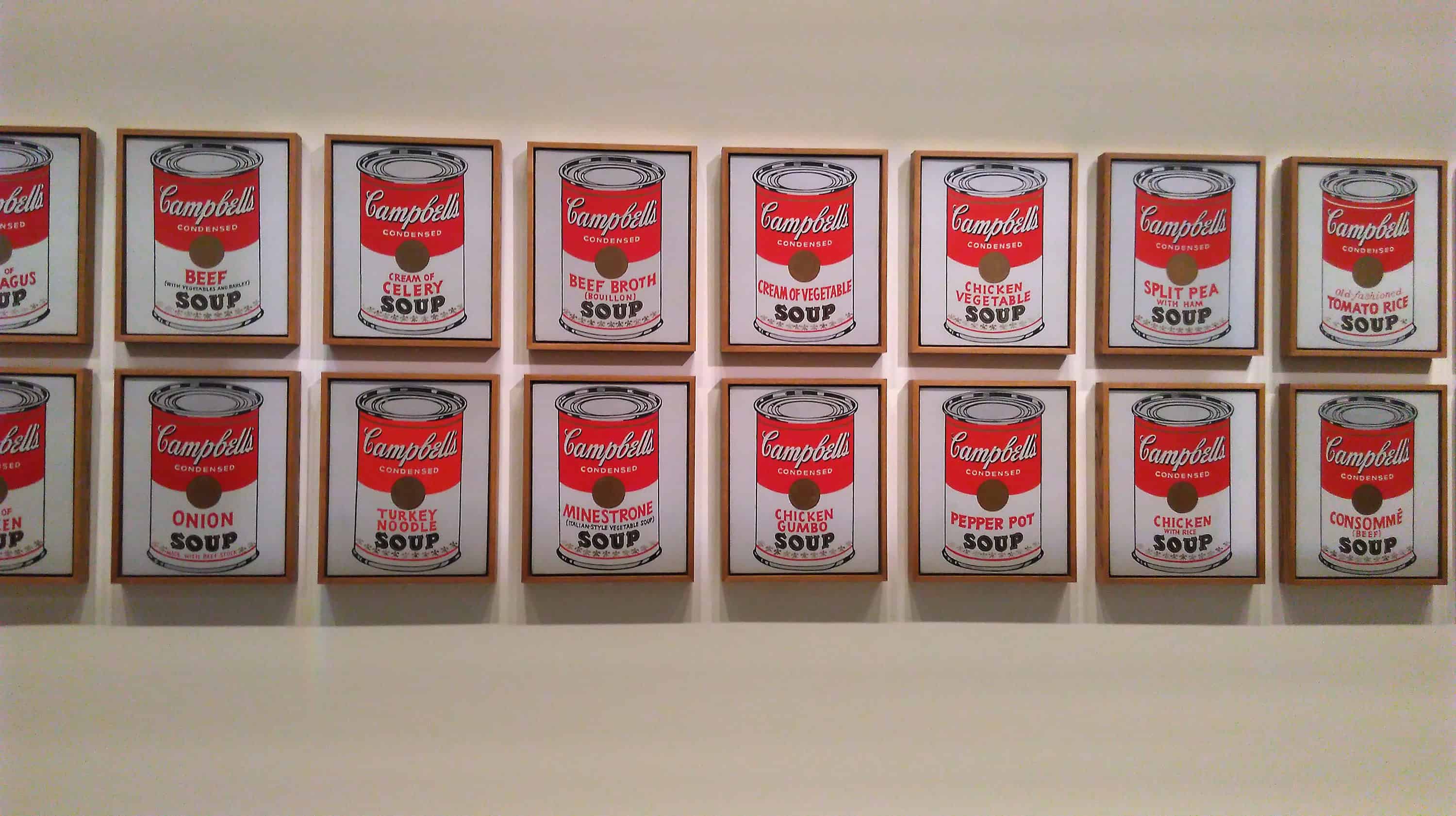
C. Darek Fortas (group show)
Le Bal
From February 9 to May 13, Le Bal presents In between, a collective show with Bas Jan Ader, Debi Cornwall, Stéphane Degoutin & Gwenola Wagon, Luc Delahaye, Darek Fortas, Hiwa K, Aglaia Konrad, Jacques-Henri Michot, Rabih Mroué, Mélanie Pavy, Sebastian Stumpf, Henk Wildschut and Paola Yacoub.
This exhibition is a poetic, abstract, fragile attempt to translate something of our times. Something indefinable, intangible but that might be recognised as the condition of one person, of several or of all: being in a state of suspension.
Neither a transition towards a possible future, nor an intermediate step, this condition relates to an inability to move forward and endless repetition of the same patterns. No longer knowing where to go, feeling out of place, having an indeterminate, blurry, precarious status and repeating gestures that have no meaning or purpose are its outward manifestations.
The state of suspension is often likened to being paralysed or stunned, but it is actually a constant, relentless, never-ending struggle to adapt. The threat comes into focus. Time seems to be running out. It is a struggle not to break free from temporality but to enter it.
Elusive and protean, the state of suspension is also something that defies depiction. How can its substance and reality be expressed? How can a person living in this state be represented, disappearing under the immediate proliferation and obsolescence of images, discourses, laws and technologies indifferent to his fate?
For the artists, the state of suspension is not a “subject”. It operates there, someplace, almost in spite of them. Their images are striking for their brutal, concrete, immediate intensity, but also touching for their simplicity, a form of neutrality, terseness and distance, as though they had to impoverish language in order to get as close to meaning as possible.
They depict people in a state of suspension, relegated to outside history, outside the landscape, surviving in a political no-man’s-land: frozen, isolated, trapped or floating bodies in empty places. Space closes in on itself. Faces and exchanged glances have vanished.
The exhibition is a heterogeneous constellation of places and issues, gradually weaving a wide network of echoes, suggesting a common place of suspension. When the myth of history moving forward in a straight line ends, when the idea of a shared destiny fades, suspension spreads out on another scale. It gradually may come to describe a state of the world.
— Diane Dufour
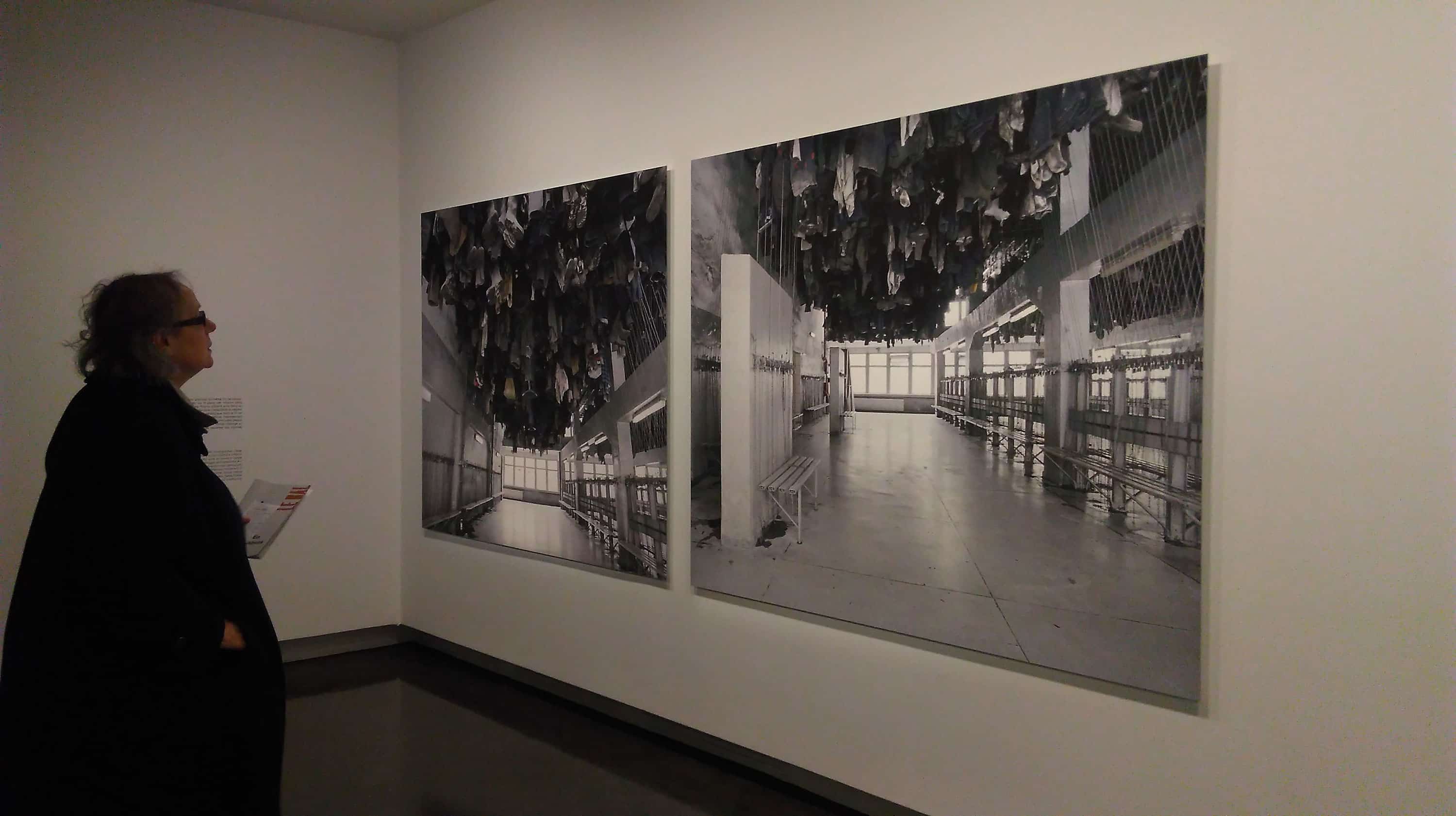
D. Katarzyna Kobro and Krzysztof Wodiczko
Centre Pompidou collection
Do you want to discover masters from Centre Pompidou collection.? Don’t miss two Polish artists:
Katarzyna Kobro (26 January 1898 in Moscow – 21 February 1951 in Łódź) was a Polish sculptor of Russian, Latvian and German origin. Under the influence of Constructivism she rejected individualism, subjectivism and expressionism, and instead postulated the absolute objectivism of form. Her main aim was to build an abstract work of art, based on universal and objective rules discovered through experimentation and analysis. Her sculpture conceptualized infinite space, which was to be seen as uniform and without focal or reference points (such as the origin of a coordinate system). Therefore, she strove to organize space in such a way that it would not be divided into space enclosed within form and excluded from it, but instead for the work to coexist with space and to allow space to penetrate it. She spent her early years in Riga, then moved with her family to Moscow in 1915. From 1917 to 1920 she studied at the Moscow School of Painting, Sculpture and Architecture. She was a member of the Moscow Union of Artists with Casimir Malevich, Olga Rozanova, Vladimir Tatlin and Alexander Rodchenko, among others. In 1920 Kobro married Polish artist Władysław Strzemiński (1893-1952). In the beginning of 1922, she fled to Poland and in 1924 obtained Polish citizenship. In 1926 she co-founded the Praesens group with architects Bohdan Lachert and Szymon Syrkus, but left the group in 1929 over content differences. Kobro, Strzemiński, painter Henryk Stażewski and poets Jan Brzękowski and Julian Przyboś then founded a.r. group, an acronym that is usually interpreted as “Revolutionary Artists” or “Real Avant-Garde”. She was instrumental in the establishment of the Museum of Modern Art in Łódź. In 1932, she and her husband joined the Abstraction-Création group. In 1937 Kobro signed the 1936 Dimensionist Manifesto published by Jean Arp, Marcel Duchamp and László Moholy-Nagy.
Krzysztof Wodiczko is an internationally renowned artist known for large-scale projections on monuments and institutional city facades that explore the relationships between communities, history, and public space. The artist has dealt extensively with trauma and healing in his projections, honoring peoples’ stories of pain, loss, and perseverance. Over many years, the projections have evolved from still slides to live and recorded videos utilizing individuals’ faces, voices, and narratives. Wodiczko is also known for interactive instruments and vehicles that empower marginalized individuals and communities and give light to societal injustices.
On public buildings and monuments in more than 40 cities worldwide, Wodiczko has executed over 80 site-specific projections. He has created projections on the Whitney Museum of American Art, New York (1989); Krakow’s City Hall Tower, Poland (1996);
Boston’s Bunker Hill Monument, Massachusetts (1998); Hiroshima’s A-Bomb Dome, Japan (1999); El Centro Cultural de Tijuana, Mexico (2001); Kunstmuseum Basel, Switzerland (2005); Signum Foundation, Poland (2008); Wroclaw’s Hill of the Partisans, Poland (2010); and New York City’s statue of Abraham Lincoln in Union Square, New York (2012). Wodiczko’s instruments, vehicles, and documentation of his projections can be found in over 20 museum and public collections worldwide including the Museu d’Art Contemporani de Barcelona, Spain; National Museum of Modern Art Kyoto, Japan; Walker Art Center, Minnesota; Montreal Museum of Fine Arts, Canada; and Hirshhorn Museum and Sculpture Garden, Washington, D.C.
Born in 1943 in Warsaw, Poland, Wodiczko lives and works in New York City and Cambridge, Massachusetts.







